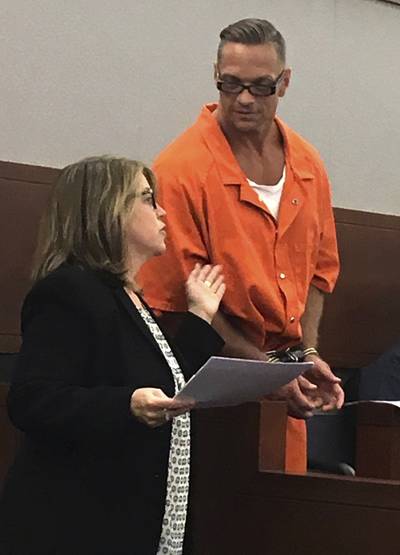Published Tuesday, Jan. 23, 2018 | 2:37 p.m.
Updated Tuesday, Jan. 23, 2018 | 5:50 p.m.
Nevada's plan to put a death row inmate to death using a first-of-its-kind lethal injection plan could be less humane than putting down a pet, the condemned man's attorneys told the state Supreme Court on Thursday.
Scott Raymond Dozier's lawyers also point in court filings to a medical expert's opinion that the proposed three-drug protocol using the sedative diazepam, the powerful opioid painkiller fentanyl and the paralytic cisatracurium poses a "high probability" risk of a "botched execution" resulting in unnecessary and unconstitutional pain and suffering.
"Nevada wants to be the first state in the nation to kill condemned inmates by suffocation via paralysis of the diaphragm muscles," federal public defenders say in the 145-page court filing. The diaphragm controls breathing.
A spokesman for state Attorney General Adam Laxalt declined to comment about the new court filing, which responds to a 65-page appeal his office filed Dec. 15 on behalf of prison officials.
The state argues that Dozier's execution should go forward using the three drugs, and notes that Dozier does not oppose the method.
No date has been set for a state Supreme Court decision whether to uphold Clark County District Court Judge Jennifer Togliatti's decision in November to postpone what would be the first execution in Nevada in 11 years.
Justices have not indicated whether they will hear oral arguments, court spokesman Michael Sommermeyer said.
Dozier, 47, a twice-convicted murderer in cases in Phoenix and Las Vegas, has said he just wants his execution carried out. But he also allowed federal public defenders David Anthony and Lori Teicher to challenge the untried Nevada protocol, which does not employ a barbiturate as a central nervous system depressant.
The attorneys point to what they term a "significant trend" among the 31 states with the death penalty "to adopt the veterinary model for executions using a single barbiturate drug" to cause death.
"To the extent that lethal injection can be performed humanely at all, it should be done at least as humanely as it would be with an animal," they said, adding that no state "explicitly" allows the use of a paralytic in animal euthanasia.
Dr. John DiMuro, an anesthesiologist who developed the protocol, has insisted that nothing in the protocol would be inhumane. DiMuro quit as Nevada's top doctor in October for reasons he said were unrelated to the execution.
DiMuro acknowledged that scarcity of lethal injection drugs nationwide drove plans to use the three drugs the state obtained. He said cisatracurium would prevent muscle movement including the diaphragm, and ensure that breathing stops.
Togliatti ruled that prison officials could execute Dozier using the diazepam and fentanyl, which the expert medical witness, Harvard Dr. David Waisel, testified would likely cause death. But the judge cited concerns that if Dozier isn't already dead, administering the paralytic could "mask" or prevent witnesses from seeing indications of pain or suffering.
None of the drugs has been used before for lethal injection in any of the 31 states that allow capital punishment, according to the nonprofit Death Penalty Information Center. Diazepam is sometimes offered in pill form to condemned inmates ahead of time.
Deborah Denno, a law professor at Fordham University in New York whose writings on the death penalty are cited twice in Dozier's filing, said the Nevada execution protocol "ignores the medical evidence showing that the paralytic is a problematic drug to use."
The court filing notes that executions in Arizona were placed on hold after convicted killer Joseph Rudolph Wood took nearly two hours to die in 2014 after receiving a two-drug combination — the anesthetic midazolam and the painkiller hydromorphone.
In Nevada, Denno said, "the circumstances are even worse because the starter drugs they're using before the paralytic heighten the risk that the person is not unconscious."
"They could suffer excruciatingly — being conscious, alive and aware of what's happening as they suffocate," Denno said. "Because they're paralyzed, it can be very difficult to tell if they're suffering."

